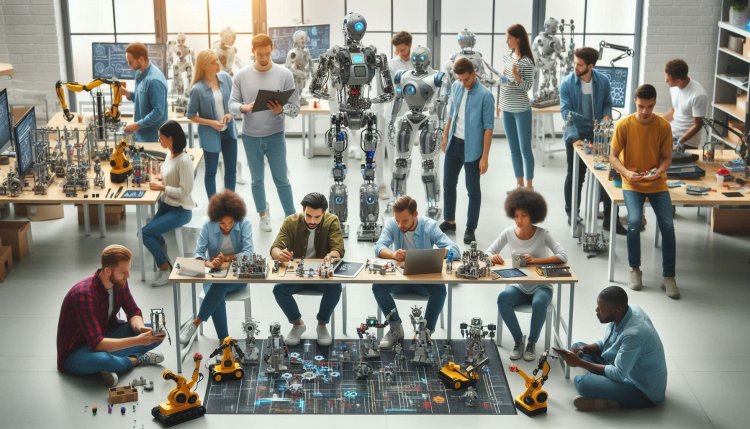Robotics
Discover the latest advancements in robotics technology and innovation. Explore the world of robots, artificial intelligence, and automation.

Robotics
Robotics is a rapidly advancing field that involves the design, construction, operation, and use of robots. Robots are autonomous or semi-autonomous machines that can perform tasks in place of humans. The field of robotics encompasses a wide range of disciplines, including mechanical engineering, electrical engineering, computer science, and artificial intelligence.
Applications of Robotics
Robotics has a wide range of applications across various industries and sectors. Some common applications of robotics include:
- Manufacturing: Robots are used in manufacturing plants to automate repetitive tasks, improve efficiency, and ensure precision in production processes.
- Healthcare: Robots are used in healthcare settings for tasks such as surgery, rehabilitation, and assistance to patients with disabilities.
- Exploration: Robots are used in space exploration, deep-sea exploration, and other hazardous environments where human presence is limited.
- Defense: Robots are used in defense and military applications for tasks such as reconnaissance, bomb disposal, and surveillance.
- Home and Personal Use: Robots are increasingly being used in homes for tasks such as vacuuming, lawn mowing, and entertainment.
Components of Robotics
Robots consist of several key components that work together to perform tasks. Some of the main components of a robot include:
- Actuators: Actuators are devices that convert energy into motion. They are responsible for moving the robot's various parts and performing tasks.
- Sensors: Sensors are used to collect information about the robot's environment. They can detect obstacles, measure distances, and provide feedback to the robot's control system.
- Control System: The control system of a robot processes data from sensors and sends commands to actuators to control the robot's movements and behavior.
- Power Supply: Robots require power to operate. The power supply provides the necessary energy for the robot's components to function.
- End Effector: The end effector is the part of the robot that interacts with the environment to perform tasks. It can be a gripper, a tool, or any other device suited to the task at hand.
Challenges in Robotics
Despite the rapid advancements in robotics, there are several challenges that researchers and engineers in the field continue to face. Some of the main challenges in robotics include:
- Autonomy: Developing robots that can operate autonomously in complex and dynamic environments remains a significant challenge. Robots need to be able to perceive their surroundings, make decisions, and adapt to changing conditions.
- Human-Robot Interaction: Designing robots that can effectively interact with humans in various settings, such as healthcare or social environments, is a challenging task. Ensuring safety, communication, and trust between humans and robots is crucial.
- Ethical and Legal Issues: The increasing use of robots raises ethical and legal questions regarding their impact on society, job displacement, privacy concerns, and liability in case of accidents or malfunctions.
- Cost and Accessibility: Developing advanced robotics technologies can be costly, limiting their accessibility to certain industries or applications. Ensuring affordability and accessibility of robotics technologies is an ongoing challenge.
Future of Robotics
The field of robotics is expected to continue advancing rapidly in the coming years, with new technologies and applications emerging. Some key trends in the future of robotics include:
- AI Integration: The integration of artificial intelligence (AI) technologies into robots will enhance their capabilities for perception, decision-making, and learning, enabling more complex and adaptive behavior.
- Collaborative Robotics: Collaborative robots, or cobots, that can work alongside
What's Your Reaction?

















